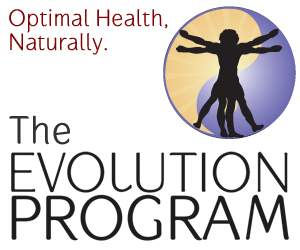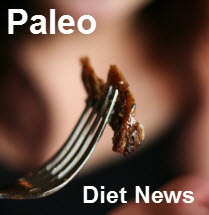The Paleo Diet and Superfoods – Part 4: Mushrooms
A variety of Asian mushrooms. Photo by FotoosVanRobin. Image courtesy of Wikipedia.org
In this ongoing series on superfoods (read parts one, two, and three), we now get to the mushrooms, those lovely magical fungi. Well, there ARE magical mushrooms, but those are NOT the sort I am talking about. The mushrooms I’m talking about have the potential to reduce the risk of heart disease and cancer. ‘They contain virtually no fat, sugar or salt and are a valuable source of dietary fiber as well as the five B vitamins thiamine (B1), riboflavin (B2), niacin (B3), pyridoxine (B6) and folate. ‘They also contain the essential minerals potassium, copper, phosphorous and iron. Most significantly they contain selenium, a mineral not found in many fruits and vegetables. And adding the superfood of mushrooms to the paleo diet is a fantastic way of getting these nutrients.
The Mushrooms
So what edible fungi are we talking about here? Some of the most well known and easily available are listed below. From NaturalNews.com:
Oyster
Oyster mushrooms are used to strengthen veins and relax tendons. “Tendon-easing powder” is an effective treatment for numbed limbs as well as tendon and blood vessel discomfort. Dried Oyster Mushrooms are high in iron which makes them a good blood builder.
Portabella
Portabellas contain a wide variety of B complex vitamins. They are also a great source of riboflavin, Pantothenic acid, niacin and a good source of thiamine, vitamin B6, folate, selenium, lysine, protein, zinc, copper, manganese, and iron.
Black morel mushroom. Photo by Danny Glick. Image courtesy of Wikipedia.org
Morels
Morels contain protein, vitamin D and B, riboflavin, niacin, and thiamine that help the body maintain a healthy metabolism. They also have copper, selenium, and potassium. They are low in carbohydrates, very low in calories and are fat free, not to mention, they contain very little sodium.
Maitake
Maitake may best be known for its cancer-fighting properties. The evidence confirming maitake’s therapeutic value is impressive. Laboratory studies have shown that maitake extract can block the growth of cancer tumors and boost the immune function of mice with cancer. Maitake mushroom was found effective against leukemia and stomach and bone cancers. In addition, many doctors in Japan use maitake mushroom to lower blood pressure and blood lipids. This mushroom has also been reported to aid digestion by regulating the stomach and intestines, and helps eliminate food stagnation.
Porcini
Just like Morels, Porcini mushrooms contain copper, selenium, potassium, and protein.
Shiitake mushrroms. Impage courtesy of Wikipedia.org
Shiitake
Research has shown that Shiitake lowers cholesterol. Shiitake also appears to be effective against some of the more serious viruses we face today: HIV and hepatitis B and appears to be a formidable cancer fighter.
Reishi
Reishi mushroom is particularly beneficial for individuals with asthma and other respiratory complaints. Reishi is good for respiratory strength and for coughing. At least one population study confirms this claim. When more the 2000 Chinese with chronic bronchitis took reishi syrup during the 1970s, within two weeks, 60 to 90% felt better and reported an improved appetite, according to the article Medicinal Mushrooms by Christopher Hobbs, published in Herbs for Health, Jan/Feb 97.
Wow! Reishi for bronchitis, maitake for cancer, shiitake for HIV and hepatitis! These mushrooms are true superfood power houses worth adding to your Paleo diet.
Cordyceps Mushrooms
Another mushroom less well known and a bit harder to come by are cordyceps. This fungus has some amazing properties including: increased strength, longevity, stamina, increased libido and more. From SuperfoodU.com:
Cordyceps mushrooms. Photo by Eric Steinert. Image courtesy od Wikipedia.org
Cordyceps is a small, dark, blade shaped fungus found in the highlands of China, Tibet, and Nepal where it is highly valued food and tonic herb. 1500 years ago the local herdsmen of Tibet noticed that when their cattle and sheep grazed where cordyceps grew, they became very strong. Even old yaks showed signs of being younger, and had increased natural vigor and vitality. This rare mushroom became a very sought after substance in the Chinese herbal tradition for its profound effects on energy, stamina, sex drive, longevity, and overall physical health and well being.
What are the benefits?
Used to dramatically increase stamina, this extraordinary superfood came to the attention of the western world in 1993 when the Chinese national running team blew away all competition by a large margin, setting nine new world records in the process. After testing negative for steroids and other banned substances it was discovered that their trainer was supplementing their diets with this little powerhouse mushroom!
In one study published in Medicine & Science in Sports & Exercise, researchers reported that athletes who took 4.5 grams of cordyceps daily for six weeks had double the rate of oxygen intake as those in the placebo group.
Cordyceps enhances and strengthens the immune system by increasing the number of the Natural Killer Cells, which are responsible for the body defense against viruses and bacteria. Some trials show that the fungus works effectively with the leukemia stricken individuals.
Providing anti-aging and fatigue reducing effects. The fungus works
as an antioxidant and increases cellular formation, especially in the elderly patients. It also promotes more restful sleep, soothes the nervous system, and reduces anxiety, thus working as a sedative. Several scientific studies have demonstrated the benefits of cordyceps in improving the amount of oxygen the body’s cells can assimilate. Cordyceps has been
shown to increase cellular oxygen absorption by up to 40%. This may in part account for the overall increases in respiratory function, physical energy, endurance, and anti-fatigue effects which are seen in humans using cordyceps.
Improving the respiratory function. Cordyceps shows good results in fighting against cough, chronic bronchitis and asthma, since it relaxes bronchial walls and has anti-inflammatory properties.
Studies have demonstrated that cordyceps helps maintain a balanced cholesterol level and actually increases HDL-cholesterol (good cholesterol) by 27 to 30% Cordyceps improves blood flow to the liver, kidney and pancreas which results in their better activity and ability to fight the diseases, including Hepatitis and chronic kidney disease.Cordyceps is also known to reduces muscle soreness, enhances recovery, promotes faster energy recovery, reduces fatigue and increases ATP Synthesis. (ATP = Cellular energy) Research studies prove cordyceps increases energy available to the cells by as much as 55%!






http://www.ncbi.nlm.nih.gov/pubmed/15118196
Cordyceps Sinensis (CordyMax Cs-4) supplementation does not improve endurance exercise performance.
It is concluded that 5 weeks of CordyMax Cs-4 supplementation has no effect on aerobic capacity or endurance exercise performance in endurance-trained male cyclists.
Interesting! I’ll have to look into that.
Thanks for commenting!